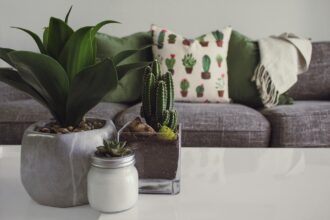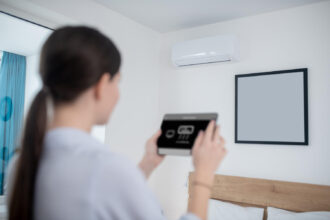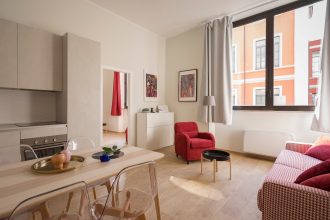As the heart of the home, kitchens are a focal point for family gatherings, energy consumption, and resource use. Today’s consumers expect more from their home kitchens. As highlighted in an article published in the Men’s Journal, three-quarters of homeowners consider the kitchen their most-used room.
Traditionally drawn to natural and earthy materials, they now seek eco-friendly appliances and materials in their kitchen designs. Most homeowners are choosing sustainable designs to minimize their environmental impact.
Bulthaup kitchens are one of the preferences that set commendable standards. It showcases how kitchen design can marry functionality with eco-friendliness. There are other elements (sustainable flooring, eco-friendly countertops, recycling and composting stations, and others) to ensure sustainability in your kitchen. In this blog post, let’s find what priorities should be made to build a ‘green kitchen.’
Prioritizing Sustainable Materials
Sustainable kitchen design begins with material choice. Bulthaup uses recyclable materials and sustainably sourced wood, which serves as an excellent example of responsible sourcing. Similarly, the use of bamboo and reclaimed wood is becoming more common, combining sustainability with modern design aesthetics.
Bamboo, recognized for its rapid growth and durability, offers a versatile choice for flooring and cabinetry. It matures in just three to five years, making it a highly renewable resource compared to traditional hardwoods. Bamboo enhances sustainability by absorbing more CO2 and emitting more oxygen, as per Anhui Union Bamboo. Its quick growth allows for repeated harvests from the same plant, avoiding deforestation.
For those interested in traditional yet sustainable materials, cork flooring stands out. Cork is obtained from tree bark without damaging the tree, which regenerates for harvesting every nine to twelve years. Its natural properties include resistance to mold, mildew, and water, making it an excellent choice for kitchen environments.
Stainless steel is a sleek option that fits well in modern kitchen designs and is both durable and recyclable. It complements the eco-friendly attributes of the kitchen by being easy to maintain and clean and resistant to heat, rust, and bacteria.
Integrating Energy-Efficient Appliances
A 2022 study emphasized the critical role of energy-efficient appliances in reducing overall kitchen energy consumption by 41% mean. Such appliances, including induction cooktops and energy-efficient ovens, use advanced technologies that significantly cut down power usage. Induction cooktops, for instance, are highly efficient. It’s because they use electromagnetic energy to directly heat pots and pans, reducing wasted heat and ensuring faster cooking times.
Bulthaup is known for its integration of energy-efficient appliances that reduce energy use. For example, it utilizes modern induction cooktops and precision-controlled ovens that enhance the overall cooking experience while conserving energy. Other considerations include a range of ENERGY STAR-certified products that ensure lower electricity bills and reduced greenhouse gas emissions.
This commitment to energy efficiency is seen across various manufacturers who continue to innovate with products. They are also focused on lowering energy consumption and enhancing kitchen utility.
According to Kitchen Distributors, a high-end residential home features a kitchen designed for aesthetic appeal and environmental responsibility. Vaulted ceilings with rough-sawn wood and expansive windows enhance natural lighting and reduce reliance on artificial sources. Flint-colored cabinets and sand beige anodized aluminum panels complement the top-of-the-line, energy-efficient Sub-Zero Wolf appliances, which exemplify sustainable luxury.
Implementing Water-Saving Fixtures
Water efficiency is crucial in sustainable kitchens. Modern kitchens are increasingly adopting water-saving fixtures to minimize water use without sacrificing functionality. Technologies like low-flow faucets and aerators, which are designed to reduce water flow while maintaining adequate pressure, are becoming standard. These devices can significantly decrease water usage in kitchens, contributing to environmental sustainability and reduced utility bills.
Bulthaup-focused designs integrate fixtures that reduce water use and complement the aesthetic and functional aspects of modern kitchens. Similarly, some other technologies ensure efficiency and user satisfaction. Instances include touchless faucets that offer convenience and hygiene by minimizing touchpoints and potentially conserving water.
In places like California, stringent water efficiency standards are set to manage and reduce water consumption, reports Canada Gazette. The state has established specific flow rates for fixtures like kitchen faucets. These must comply with a maximum flow rate to meet regulations.
Designing for Durability and Waste Reduction
Longevity in kitchen design reduces the need for frequent replacements and cuts down on waste. Here are specific design elements that can help achieve this:
- Multi-functional range cookers: Incorporating a multi-functional range cooker can serve several cooking functions from one appliance. Hence, it reduces the need for multiple machines and saves space.
- Timeless cabinet designs: Opting for neutral or classic cabinet designs such as the Shaker style can endure through trend cycles. High-quality wood that can be repainted or refinished extends the life of cabinetry without needing full replacements.
- LED lighting: Implementing LED lighting solutions in the kitchen is not only energy-efficient but also resilient. Moreover, LEDs have a much longer lifespan than traditional bulbs, which decreases the need for frequent replacements.
- Low-VOC paints: Using paints that emit lower levels of VOCs improves indoor air quality. These paints also offer better durability against kitchen humidity and temperature changes, maintaining their finish for longer periods.
FAQs
What defines the most eco-friendly kitchen?
The most eco-friendly kitchen is defined by its ability to minimize environmental impact through every aspect of its design and functionality. This includes using sustainable materials like FSC-certified wood for cabinetry and non-VOC paints to ensure healthier indoor air quality. High-efficiency appliances that conserve energy and reduce waste are fundamental.
How can sustainability be enhanced in kitchen design?
Kitchens can become more sustainable by integrating several key practices. For this, select energy-efficient appliances, use sustainable and recycled materials, and optimize water use with low-flow fixtures. Additionally, choose countertops and flooring made from renewable resources like bamboo or recycled glass for a lower environmental impact.
What’s the prevailing trend for green kitchens in 2024?
The green kitchens are not just about color. They incorporate sustainable practices, such as the use of eco-friendly materials and energy-efficient appliances. The focus on sustainability is evident in choices like Energy Star-certified appliances and materials that minimize environmental impact. This approach aligns with a growing consumer interest in lifestyles that are both aesthetically pleasing and environmentally responsible.
To truly forge a sustainable path, we must critically examine the real impact and scalability of popular sustainable kitchen trends. While advocating for materials like bamboo and cork and integrating energy-efficient appliances are commendable, they are merely a starting point.
The drive towards sustainability must address systemic issues such as energy consumption across the entire lifecycle of kitchen products. It’s crucial to question whether these efforts are enough to offset the environmental costs of manufacturing, transport, and eventual waste.














